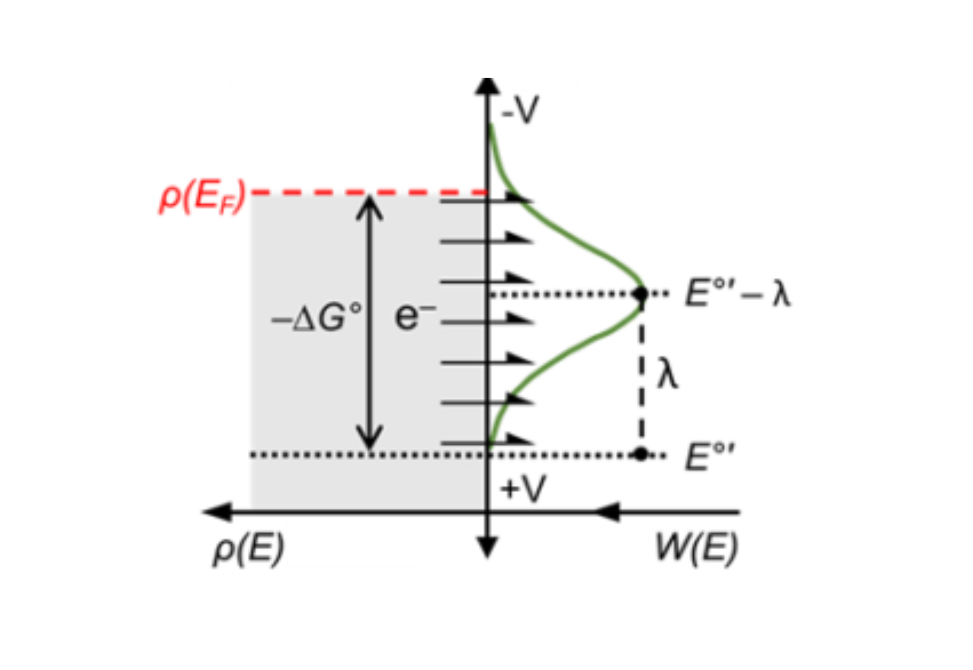Free Energy Dependencies for Interfacial Electron Transfer from Tin-Doped Indium Oxide (ITO) to Molecular Photoredox Catalysts
Abstract
John B. Goodenough proposed that interfacial electron transfer kinetics from main group metal oxides should be fundamentally different from that of transition metal oxides, an expectation that has not been widely tested. Herein, the kinetics for interfacial electron transfer from mesoporous transparent conductive oxide Tin-doped Indium Oxide (ITO) to four photoredox catalysts (PCs) were characterized in acetonitrile electrolytes. The photocatalysts had the form: [Ru(4,4ʹ-R2-2,2′-bipyridine)2(4,4ʹ-(PO3H2)2-2,2′-bipyridine)]2+, where R was H, methoxy, tert-butyl, and Br. The impact of the surface binding group was characterized with [Ru(2,2′-bipyridine)2(4,4ʹ-(CO2H)2-bpy)]2+. The interfacial electron transfer reaction ITO(e−)∣PC+ → ITO∣PC was quantified by nanosecond absorption spectroscopy as a function of the applied potential (and hence ‒ΔG°). Specific conditions of applied potential were identified where the kinetics were sensitive to the incident irradiance. A layer-by-layer method was used to insert ionic methylene bridge(s) between the PC and the oxide surface. Marcus-Gerischer analysis of the kinetic data indicates non-adiabatic interfacial electron transfer with total reorganization energies that increase when bridges were placed between the photocatalyst and the ITO surface.
Citation
Rachel E. Bangle, Jenny Schneider, Quentin Loague, Matthew Kessinger, Andressa V. Müller and Gerald J. Meyer. 2022 ECS J. Solid State Sci. Technol. 11 025003


